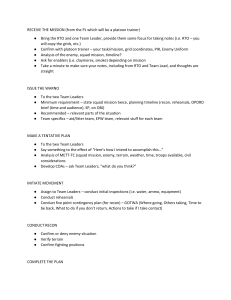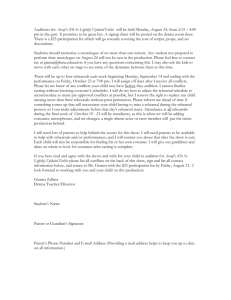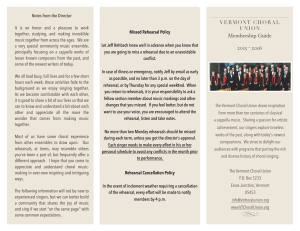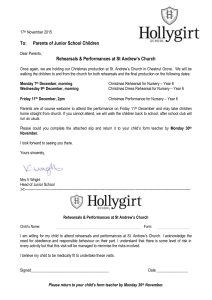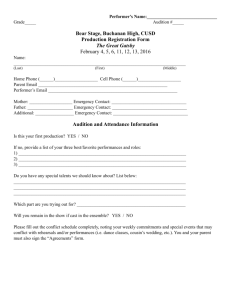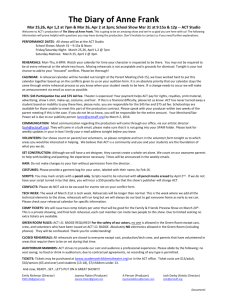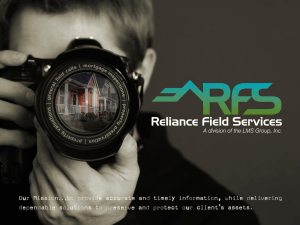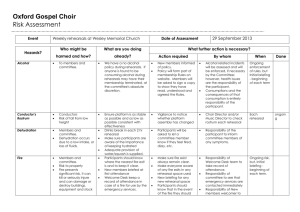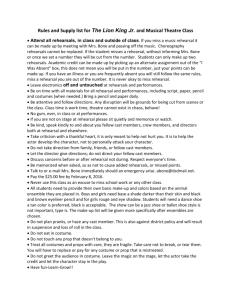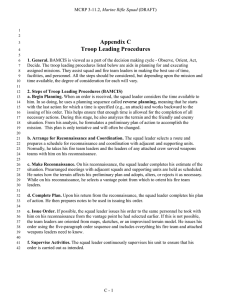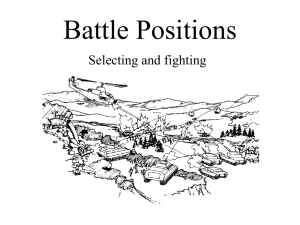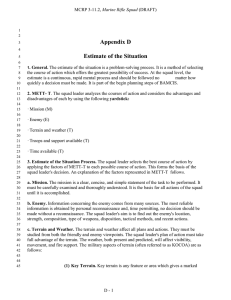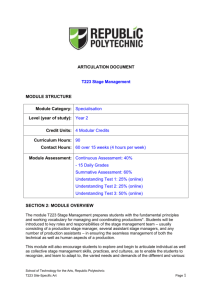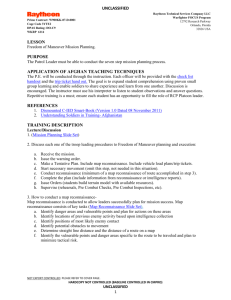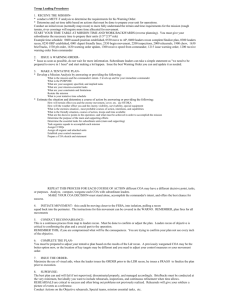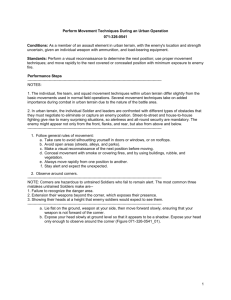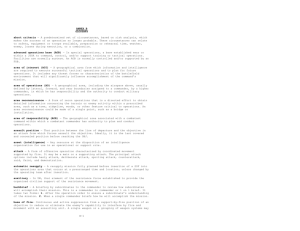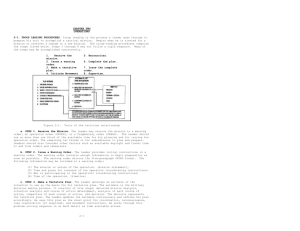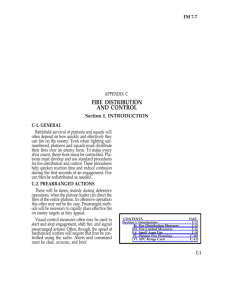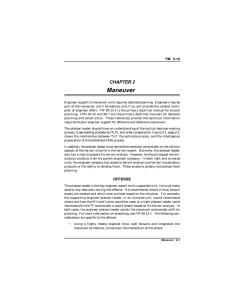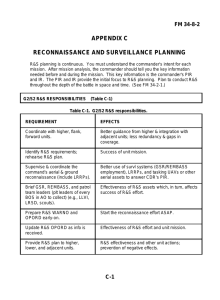Troop Leading Procedures
advertisement
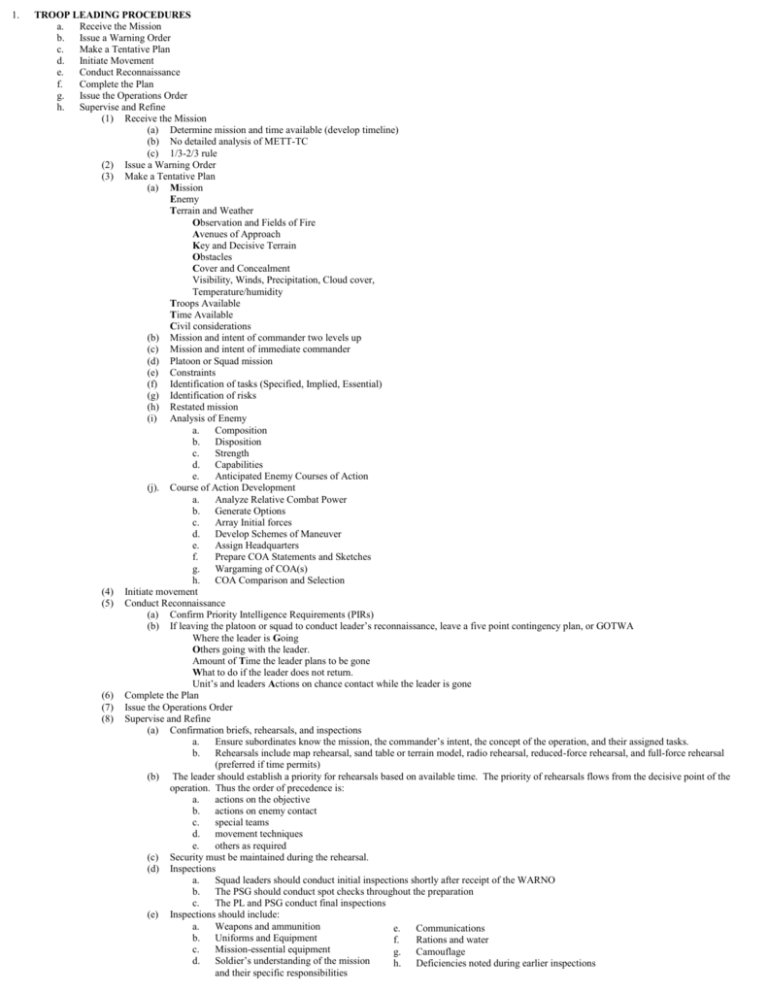
1. TROOP LEADING PROCEDURES a. Receive the Mission b. Issue a Warning Order c. Make a Tentative Plan d. Initiate Movement e. Conduct Reconnaissance f. Complete the Plan g. Issue the Operations Order h. Supervise and Refine (1) Receive the Mission (a) Determine mission and time available (develop timeline) (b) No detailed analysis of METT-TC (c) 1/3-2/3 rule (2) Issue a Warning Order (3) Make a Tentative Plan (a) Mission Enemy Terrain and Weather Observation and Fields of Fire Avenues of Approach Key and Decisive Terrain Obstacles Cover and Concealment Visibility, Winds, Precipitation, Cloud cover, Temperature/humidity Troops Available Time Available Civil considerations (b) Mission and intent of commander two levels up (c) Mission and intent of immediate commander (d) Platoon or Squad mission (e) Constraints (f) Identification of tasks (Specified, Implied, Essential) (g) Identification of risks (h) Restated mission (i) Analysis of Enemy a. Composition b. Disposition c. Strength d. Capabilities e. Anticipated Enemy Courses of Action (j). Course of Action Development a. Analyze Relative Combat Power b. Generate Options c. Array Initial forces d. Develop Schemes of Maneuver e. Assign Headquarters f. Prepare COA Statements and Sketches g. Wargaming of COA(s) h. COA Comparison and Selection (4) Initiate movement (5) Conduct Reconnaissance (a) Confirm Priority Intelligence Requirements (PIRs) (b) If leaving the platoon or squad to conduct leader’s reconnaissance, leave a five point contingency plan, or GOTWA Where the leader is Going Others going with the leader. Amount of Time the leader plans to be gone What to do if the leader does not return. Unit’s and leaders Actions on chance contact while the leader is gone (6) Complete the Plan (7) Issue the Operations Order (8) Supervise and Refine (a) Confirmation briefs, rehearsals, and inspections a. Ensure subordinates know the mission, the commander’s intent, the concept of the operation, and their assigned tasks. b. Rehearsals include map rehearsal, sand table or terrain model, radio rehearsal, reduced-force rehearsal, and full-force rehearsal (preferred if time permits) (b) The leader should establish a priority for rehearsals based on available time. The priority of rehearsals flows from the decisive point of the operation. Thus the order of precedence is: a. actions on the objective b. actions on enemy contact c. special teams d. movement techniques e. others as required (c) Security must be maintained during the rehearsal. (d) Inspections a. Squad leaders should conduct initial inspections shortly after receipt of the WARNO b. The PSG should conduct spot checks throughout the preparation c. The PL and PSG conduct final inspections (e) Inspections should include: a. Weapons and ammunition e. Communications b. Uniforms and Equipment f. Rations and water c. Mission-essential equipment g. Camouflage d. Soldier’s understanding of the mission h. Deficiencies noted during earlier inspections and their specific responsibilities
